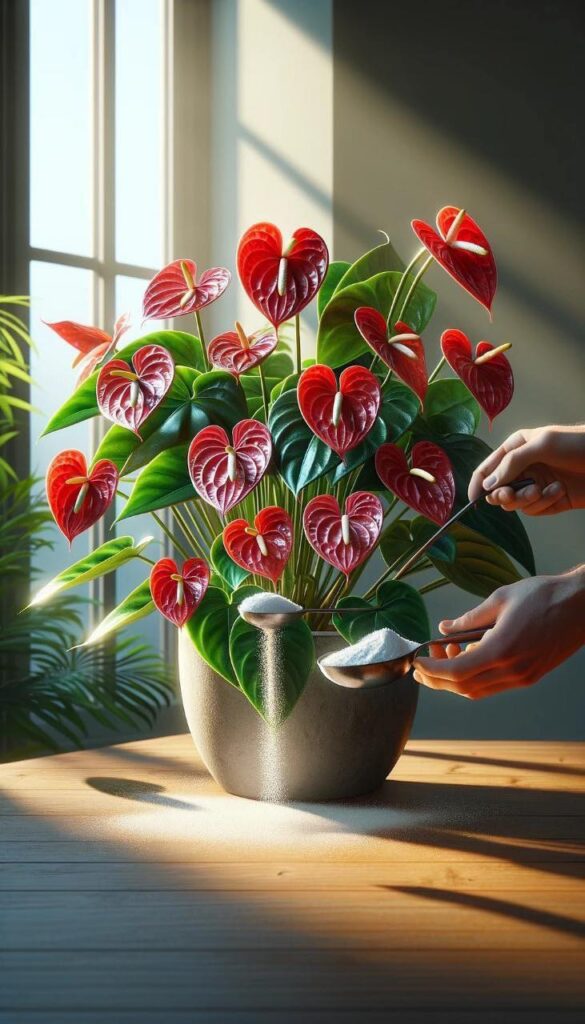4️⃣ Use the Right Substrate
As an epiphytic plant, Anthurium doesn’t thrive in dense black soil.
Use a loose, well-draining mix, ideally potting soil mixed with pine bark, to retain moisture without becoming soggy.
5️⃣ Fertilize Carefully
Anthuriums require minimal fertilization.
Use half the recommended fertilizer dose, preferably from the same manufacturer as the soil.
Over-fertilizing can harm the plant.
6️⃣ Spray with Care
Avoid wetting flowers or bracts—moisture can cause rotting.
When spraying leaves, shield the flowers using small bags or other protective covers.
7️⃣ Protect from Drafts
Anthuriums love warmth.
Ideal temperature: 22–28°C (72–82°F) in winter.
Avoid drafts, which can stress the plant and cause diseases.
🌸 Final Thoughts
By following these simple yet effective care rules, your Anthurium can grow beautifully and reward you with abundant, long-lasting blooms.
Forget frustration—start growing happier, healthier plants today!
4️⃣ Use the Right Substrate
As an epiphytic plant, Anthurium doesn’t thrive in dense black soil.
Use a loose, well-draining mix, ideally potting soil mixed with pine bark, to retain moisture without becoming soggy.
5️⃣ Fertilize Carefully
Anthuriums require minimal fertilization.
Use half the recommended fertilizer dose, preferably from the same manufacturer as the soil.
Over-fertilizing can harm the plant.
6️⃣ Spray with Care
Avoid wetting flowers or bracts—moisture can cause rotting.
When spraying leaves, shield the flowers using small bags or other protective covers.
7️⃣ Protect from Drafts
Anthuriums love warmth.
Ideal temperature: 22–28°C (72–82°F) in winter.
Avoid drafts, which can stress the plant and cause diseases.
🌸 Final Thoughts
By following these simple yet effective care rules, your Anthurium can grow beautifully and reward you with abundant, long-lasting blooms.
Forget frustration—start growing happier, healthier plants today!

